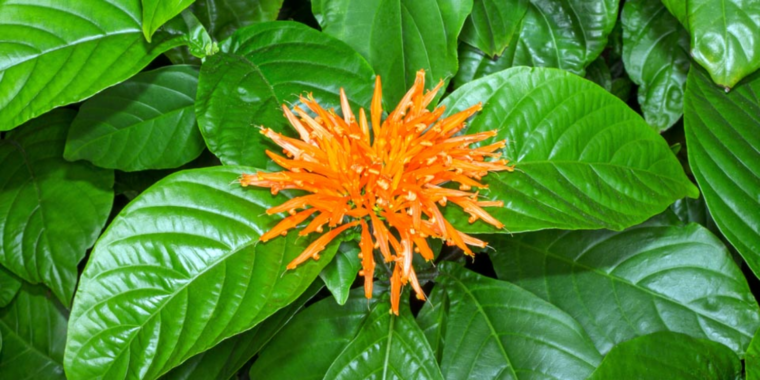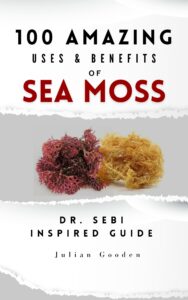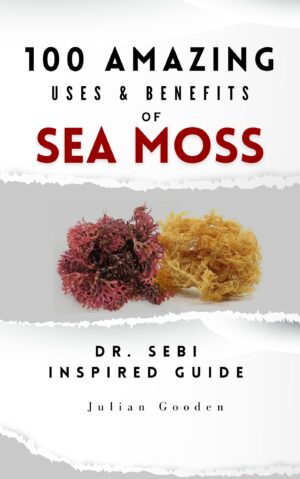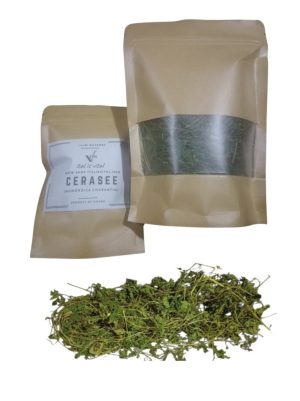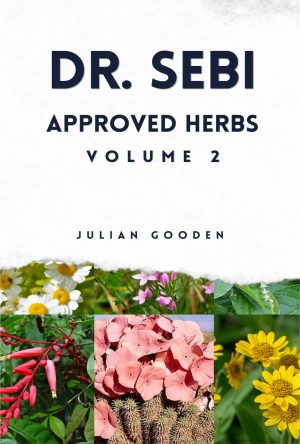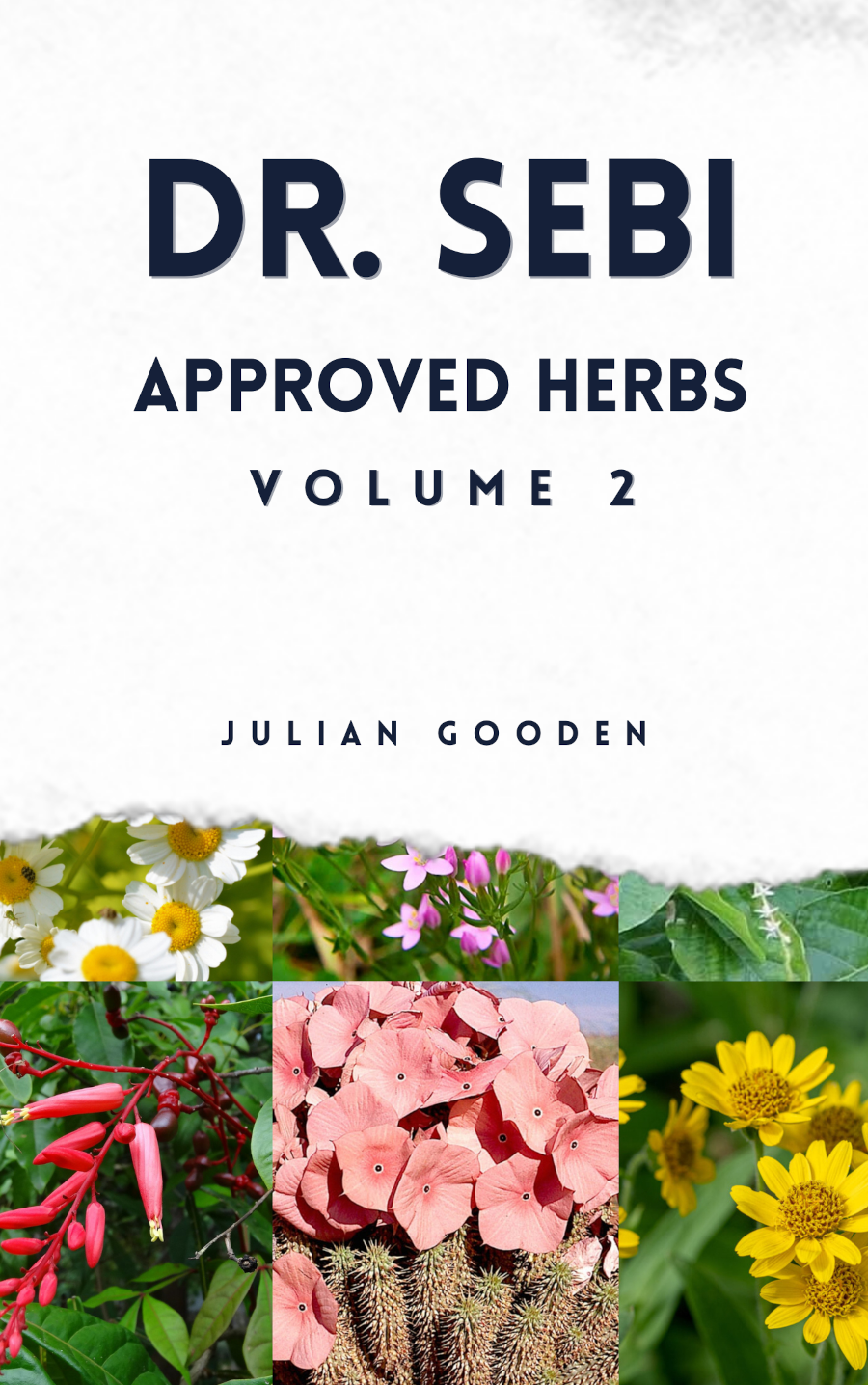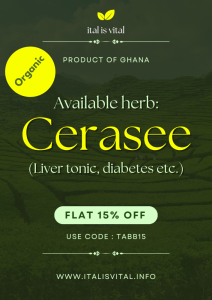Muicle (Justicia spicigera) Herbal Profile
Botanical Overview
- Scientific Name: Justicia spicigera Schltdl.
- Common Names: Muicle, Mexican Honeysuckle, Desert Honeysuckle, Firecracker Bush, Moyotle, Moyotli, Trumpetilla, Hierba de la Virgen.
- Family: Acanthaceae
- Description: Justicia spicigera is a perennial evergreen shrub native to Mexico, Central America (e.g., Guatemala, Honduras, El Salvador), and parts of South America (e.g., Colombia). It typically grows 3–6 feet tall, though it can reach up to 8 feet in optimal conditions. The plant features glossy, vibrant green, ovate leaves and clusters of bright orange-red tubular flowers that bloom year-round in warm climates, attracting hummingbirds, bees, and butterflies. Muicle thrives in well-drained soils in tropical and subtropical regions, tolerating arid and semi-arid environments. Its leaves, stems, roots, and occasionally flowers are used in herbal remedies, prepared as teas, decoctions, tinctures, or poultices.
- Cultural Significance: In Mexican traditional medicine, muicle is revered as a sacred herb, often called “hierba de la virgen” (herb of the Virgin) due to its association with spiritual cleansing and healing rituals.
Phytochemical Makeup
Muicle contains a variety of bioactive compounds that contribute to its therapeutic effects:
- Flavonoids: Provide antioxidant and anti-inflammatory effects, supporting cellular health.
- Phenols: Contribute to antimicrobial and antioxidant properties.
- Essential Oils: Impart aromatic qualities and potential antimicrobial benefits.
- Minerals: Includes potassium, calcium, sulfate, and trace amounts of iron, which may support blood health and metabolic functions.
- Calcium Oxalate: Present in small amounts, requiring caution in individuals prone to kidney stones.
- Other Compounds: Contains glycosides and tannins, which may aid in digestive and astringent effects.
These compounds underpin muicle’s traditional use as an anti-inflammatory, antimicrobial, antioxidant, and blood-purifying herb.
Therapeutic Uses and Benefits
Muicle is a cornerstone of traditional Mexican and Central American herbal medicine, with applications rooted in centuries-old practices, particularly among Indigenous communities. Below is an expanded list of its traditional and potential uses, including lesser-known applications:
- Blood Purification and Anemia Support:
- Muicle is widely used to “cleanse the blood,” a traditional concept associated with detoxifying the body and improving circulation. Its iron and mineral content may support red blood cell production, making it a remedy for anemia or low energy related to blood deficiencies.
- Traditional Use: Taken as a tea or decoction to address fatigue, weakness, or pale complexion associated with anemia.
- Energy and Mood Support:
- Known for its uplifting and stimulating effects, muicle is used to combat mental fatigue, anxiety, and mild depression. It is considered a natural mood enhancer, often used in spiritual practices to promote emotional balance and clarity.
- Traditional Use: Consumed as a tea to alleviate sadness, promote motivation, or prepare for rituals requiring mental focus.
- Digestive Health:
- Muicle’s anti-inflammatory and antimicrobial properties make it effective for treating gastrointestinal issues such as dysentery, diarrhea, stomach cramps, and bloating. Its tannins may provide astringent effects to soothe irritated mucous membranes.
- Traditional Use: Used to treat colic, indigestion, and parasitic infections in the gut.
- Diabetes Management:
- Traditional healers use muicle to regulate blood sugar levels, potentially due to its mineral content and flavonoids, which may support insulin sensitivity or metabolic health.
- Traditional Use: Taken as a tea or decoction to stabilize blood glucose, often combined with other herbs like copalchi (Coutarea latiflora).
- Skin and Wound Healing:
- Muicle’s antimicrobial and anti-inflammatory properties make it effective for topical use in treating wounds, rashes, acne, and skin infections. It is also used to soothe burns and promote tissue repair.
- Traditional Use: Applied as a poultice or strong decoction wash for cuts, scrapes, or fungal infections. Leaves may be crushed and applied directly to affected areas.
- Immune Support:
- The herb’s antioxidants and flavonoids may enhance immune function by reducing oxidative stress and supporting the body’s defense against infections.
- Traditional Use: Taken as a tonic to prevent illness or recover from infections, particularly during seasonal changes.
- Respiratory Health:
- In some regions, muicle is used to alleviate respiratory conditions such as colds, coughs, and bronchitis. Its anti-inflammatory and antimicrobial properties may help reduce mucus and fight respiratory infections.
- Traditional Use: Consumed as a tea or inhaled as a steam infusion for sinus congestion or sore throat.
- Menstrual and Reproductive Health:
- Muicle is traditionally used to regulate menstrual cycles, alleviate menstrual cramps, and support women’s reproductive health. It is believed to balance hormones and reduce inflammation in the pelvic region.
- Traditional Use: Taken as a tea to ease dysmenorrhea (painful periods) or irregular menstruation. In some cultures, it is used postpartum to promote recovery.
- Anti-inflammatory and Pain Relief:
- Muicle is employed to reduce inflammation and pain associated with conditions like arthritis, muscle aches, and joint pain. Its flavonoids and phenols likely contribute to these effects.
- Traditional Use: Used as a tea or topical compress for rheumatic pain or swollen joints.
- Spiritual and Ritual Cleansing:
- In Mexican and Central American traditions, muicle is used in spiritual practices to cleanse negative energy, protect against illness, or prepare individuals for ceremonies. It is often combined with other herbs like rosemary or rue in ritual baths.
- Traditional Use: Burned as incense, used in smudging, or prepared as a bath to promote spiritual clarity and protection.
- Cardiovascular Health:
- Some traditional practices suggest muicle supports heart health by improving circulation and reducing blood pressure, possibly due to its potassium content and vasodilatory effects.
- Traditional Use: Consumed as a tea to support cardiovascular function, though scientific evidence is limited.
Dosage Recommendations
The following dosages are based on traditional use and general herbal guidelines. Always consult a professional herbal healer for further advice.
- Tea/Infusion: Steep 1–2 teaspoons of dried muicle leaves or flowers in 8–10 oz of boiling spring water for 3–5 minutes. Drink 1–2 cups daily for general health, blood purification, or mood support. For acute conditions, up to 3 cups may be consumed under guidance.
- Decoction: Boil 1–2 tablespoons of dried leaves, stems, or roots in 2 cups of water for 10–15 minutes. Strain and drink 1 cup daily for stronger effects, such as diabetes management or digestive issues.
- Topical Use: Prepare a strong decoction (2 tablespoons of dried herb in 1 cup of water, boiled for 15 minutes) and use as a wash, compress, or poultice for wounds, skin infections, or inflammation. Alternatively, crush fresh leaves and apply directly to the skin.
- Tincture (Less Common): Take 5–10 drops of a 1:5 muicle tincture (herb-to-alcohol ratio) in water, 1–2 times daily, for internal use. Consult an herbalist for precise dosing.
- Ritual Bath: Boil 2–3 tablespoons of dried muicle in 1 liter of water, strain, and add to bathwater for spiritual cleansing or skin soothing.
Precautions and Side Effects
Muicle is generally safe when used in moderation, but the following precautions should be noted:
- Calcium Oxalate: The presence of calcium oxalate may pose a risk for individuals with a history of kidney stones or kidney disease. Limit consumption and consult a healthcare provider.
- Pregnancy and Breastfeeding: Due to limited research, muicle should be avoided during pregnancy or breastfeeding unless under professional supervision.
- Allergic Reactions: Rarely, sensitive individuals may experience skin rashes or digestive upset (e.g., nausea, diarrhea) from overuse. Discontinue use if adverse reactions occur.
- Drug Interactions: Muicle may interact with medications for diabetes or blood pressure due to its potential effects on blood sugar and circulation. Consult a doctor if taking such medications.
- Overuse: Excessive consumption (e.g., more than 3 cups of tea daily) may lead to digestive discomfort.
Additional Notes
- Cultural Context: Muicle’s use is deeply rooted in Mexican and Central American herbal traditions, particularly among Indigenous groups like the Nahua and Zapotec. Its spiritual applications are as significant as its medicinal ones, reflecting a holistic approach to healing.
- Research Gaps: While muicle is widely used in traditional medicine, scientific studies on its efficacy and safety are limited. Most evidence is anecdotal or based on preliminary research on its phytochemicals.
- Availability: Muicle is available as dried leaves, powders, or tinctures in herbal markets, particularly in Mexico and Latin America. It can also be grown in home gardens in warm climates.
Reference Further Reading
- Argueta, A., Cano, L. M., & Rodarte, M. E. (1994). Atlas de las Plantas de la Medicina Tradicional Mexicana. Instituto Nacional Indigenista.
- Kay, M. A. (1996). Healing with Plants in the American and Mexican West. University of Arizona Press.
- Baqueiro-Peña, I., & Guerrero-Beltrán, J. Á. (2017). Physicochemical and antioxidant characterization of Justicia spicigera. Food Chemistry, 218, 305–312. https://doi.org/10.1016/j.foodchem.2016.09.078
- Cáceres-Cortés, J. R., Cantú-Garza, F. A., Mendoza-Mata, M. T., Chavez-González, M. A., Ramos-Mandujano, G., & Zambrano-Ramírez, I. R. (2001). Cytotoxic activity of Justicia spicigera is inhibited by bcl-2 proto-oncogene and induces apoptosis in a cell cycle dependent fashion. Phytotherapy Research, 15(8), 691–697. https://doi.org/10.1002/ptr.900
- Alonso-Castro, A. J., Ortiz-Sánchez, E., Domínguez, F., Arana-Argáez, V., Juárez-Vázquez, M. C., Chávez, M., Carranza-Álvarez, C., Gaspar-Ramírez, O., Espinosa-Reyes, G., Ortiz-Andrade, R., & García-Carrancá, A. (2012). Antitumor and immunomodulatory effects of Justicia spicigera Schltdl (Acanthaceae). Journal of Ethnopharmacology, 141(3), 888–894. https://doi.org/10.1016/j.jep.2012.03.036
- Fernández-Pomares, C., Juárez-Aguilar, E., Domínguez-Ortiz, M. Á., Gallegos-Estudillo, J., Herrera-Covarrubias, D., Sánchez-Medina, A., Aranda-Abreu, G. E., Manzo, J., & Hernández, M. E. (2018). Hydroalcoholic extract of the widely used Mexican plant Justicia spicigera Schltdl. exerts a cytostatic effect on LNCaP prostate cancer cells. Journal of Herbal Medicine, 12, 66–72. https://doi.org/10.1016/j.hermed.2017.09.003
- Sepúlveda-Jiménez, G., Reyna-Aquino, C., Chaires-Martínez, L., Bermúdez-Torres, K., & Rodríguez-Monroy, M. (2009). Antioxidant activity and content of phenolic compounds and flavonoids from Justicia spicigera. Revista Fitotecnia Mexicana, 32(1), 69–73. https://www.researchgate.net/publication/262011687
- Domínguez, X. A., & Alcorn, J. B. (1985). Mexican medicinal plants: Chemical and pharmacological studies. Journal of Ethnopharmacology, 13(2), 139–156.
- Cano Asseleih, L. M., & Sánchez, M. (1997). Chemical constituents of Justicia spicigera. Revista Latinoamericana de Química, 25(3), 112–116.
- Heinrich, M., Ankli, A., Frei, B., Weimann, C., & Sticher, O. (1998). Medicinal plants in Mexico: Healers’ consensus and cultural importance. Social Science & Medicine, 47(11), 1859–1871.
- Hernández, T., Canales, M., Avila, J. G., Duran, A., Caballero, J., Romo de Vivar, A., & Lira, R. (2003). Ethnobotany and antibacterial activity of some plants used in traditional medicine of Zapotitlán de las Salinas, Puebla (Mexico). Journal of Ethnopharmacology, 88(2–3), 181–188.
- Lipp, F. J. (1991). The Mixe of Oaxaca: Religion, Ritual, and Healing. University of Texas Press.
- Bye, R., & Linares, E. (1983). The role of plants in traditional medicine in Mexico. Journal of Ethnopharmacology, 8(1), 1–15.
- Duke, J. A. (2008). Duke’s Handbook of Medicinal Plants of Latin America. CRC Press.
- Balick, M. J., & Cox, P. A. (1996). Plants, People, and Culture: The Science of Ethnobotany. Scientific American Library.
- Tierra, M. (1998). The Way of Herbs. Pocket Books.
- Brinker, F. (2010). Herb Contraindications and Drug Interactions. Eclectic Medical Publications.
- Standley, P. C., & Williams, L. O. (1973). Flora of Guatemala: Acanthaceae. Field Museum of Natural History.
- Quattrocchi, U. (2012). CRC World Dictionary of Medicinal and Poisonous Plants. CRC Press.
- Lozoya, X., & Meckes, M. (1989). Traditional Mexican medicinal plants: Pharmacological and toxicological studies. Journal of Ethnopharmacology, 27(1–2), 1–14.
- Ethnobotanical Focus: Sources like Argueta et al. (1994), Kay (1996), and Lipp (1991) emphasize muicle’s cultural and traditional uses in Mexican and Central American herbal medicine, covering a wide range of applications (e.g., blood purification, spiritual cleansing, cancer, menstrual health).
- Scientific Validation: Studies like Baqueiro-Peña & Guerrero-Beltrán (2017), Cáceres-Cortés et al. (2001), Alonso-Castro et al. (2012), and Fernández-Pomares et al. (2018) provide preliminary evidence for muicle’s anti-cancer, antioxidant, and anti-inflammatory properties, but clinical trials are limited.
- Accessing Sources: Journal articles are available via PubMed, ScienceDirect, or ResearchGate. Books like Argueta et al. (1994) and Kay (1996) may be accessed through university libraries or institutions like UNAM. Some sources (e.g., Sepúlveda-Jiménez et al., 2009) are freely available online.


